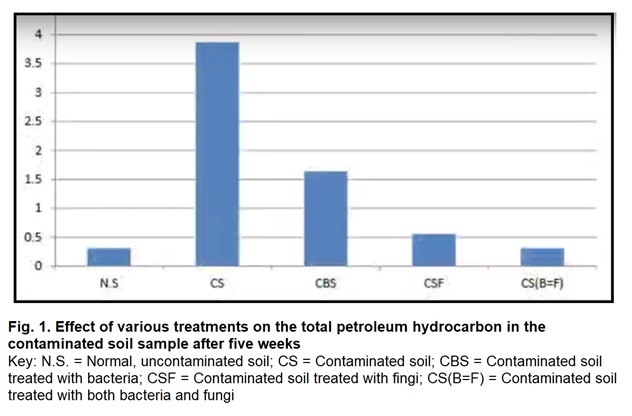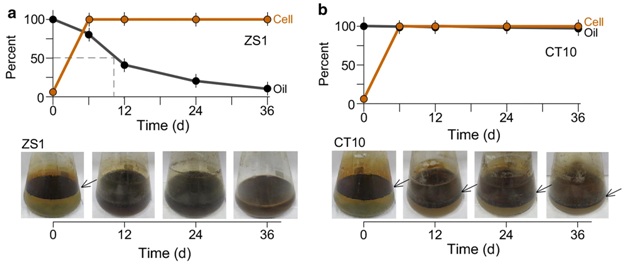Reference no: EM133195847 , Length: Word count: 3 Pages
Assignment Part A: In a recent experiment, scientists treated contaminated soil with bacteria, with fungi, and with a mixture of bacteria and fungi. Figure below shows the concentration of hydrocarbons (compounds found in oil) in natural soil (N.S.), untreated contaminated soil (CS), and each of the three treatments. Answer questions 1-3 based on this experiment and Figure below.

Question 1: What was the purpose of including untreated contaminated soil in this experiment?
Question 2: Which of the three treatments were effective at reducing the amount of hydrocarbon contamination in the soil?
Question 3: Which of the three treatments was the most effective at reducing the amount of hydrocarbon contamination in the soil (which worked the best)?
Assignment Part B: In another experiment, scientists tested different microbial strains for their ability to degrade petroleum (oil). Figure below shows the results for two strains (ZS1 and CT10). Upper panel shows the percentage of cell mass (Cell) and crude oil mass (Oil) detected in cultures at various time points indicated. Bottom panel shows the presence (with arrow) or absence (without arrow) of floating oil in culture flask. Answer questions 4-6 based on Figure below.

Figure: Oil-eating activity of two microbial strains over 36 days of incubation
Question 4: Describe any changes in crude oil mass (Oil) over the 36 days of incubating the ZS1 microbial strain.
Question 5: What happened to the oil that disappeared from the flask? Where did it go?
Question 6: Describe any changes in crude oil mass (Oil) over the36 days of incubating the CT10 microbial strain.
Question 7: Would either of these two microbial strains be useful for bioremediation of an oil spill? If so, which strain?
Assignment Part C: Questions 7 refers to your bioremediation lab, including the video provided for you. Read the lab instructions and watch the video, then answer the following questions.
Question 8: In step 3, an oil-hungry microbial suspension is added to Vial #1 only, but not to Vial #2. Which vial is the control? Why is it necessary to have a control in this experiment?
Question 9: Describe the appearance of the liquid in each of the three vials at the start of the experiment, before adding and oil-eating microbial suspension.
| Vial |
Appearance at Day 0 (Start) |
| 1 |
|
| 2 |
|
| No oil |
|
Question 10: Observe the changes in each vial over the duration of the experiment (in the video). What does turbidity (cloudiness or murkiness) in the water in your test vial indicate?
Question 11: Pause the video and look carefully at Day 1 and Day 7. Describe any differences you notice between Day 1 and Day 7.
Question 12: Did the "oil-hungry" microbes in this experiment successfully remove the oil from the water in Vial #1? Answer yes or no and explain.
Question 13: Assume that the laboratory procedures were followed correctly, and there was nothing "wrong" with the oil-hungry microbial suspension. What variables might explain why the microbes were not able to eat all the oil that was present? Hint: Think about what else the microbes might need to thrive, and what variables might affect microbial growth rates.